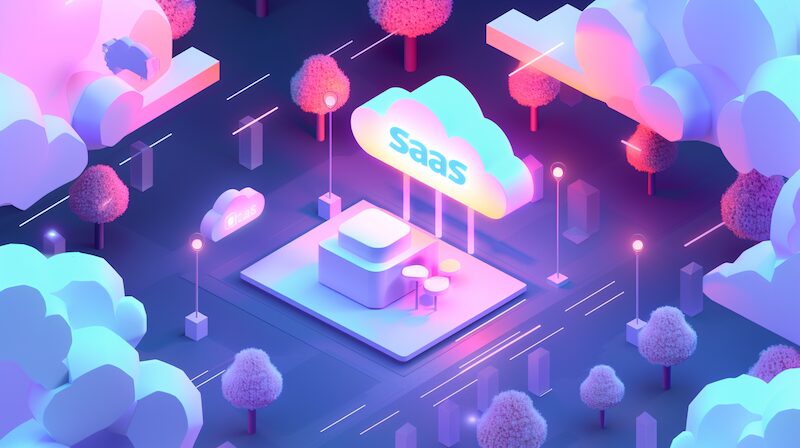Embracing SaaS: A Guide to Benefits and Security Concerns

Software as a Service (SaaS) has become a vital part of modern business infrastructure. A staggering 85% of new IT software adoption is SaaS-based. The average company utilizes around 400 of this type of application. They power every facet of business operations, from email to customer relationship management, financial tracking, human resources, and project management.
Easy implementation, scalability, and low entry costs have driven the SaaS market size to a massive $273.55 billion. However, this expansion presents significant challenges, particularly in managing security within these vast and varied environments.
In this article, we take an in-depth look at how organizations have embraced SaaS. We’ll address the various benefits and challenges that come with its use.
What is SaaS?
The SaaS model significantly differs from the traditional software delivery model, which requires installation in an on-premise location. Organizations do not install anything with software delivered as a service. The software exists in a provider-hosted environment, which the user connects to over the internet.
SaaS apps typically charge per user instead of per device. They often offer pay-as-you-go or yearly subscription options. This means you only pay for the number of users accessing the app.
What Are the Benefits of SaaS?
Many organizations start their SaaS adoption to take advantage of the financial benefits. Unlike traditional software purchases, it requires no initial hardware or software infrastructure investment. Its cloud-based nature allows the cost to be spread over time and correlates to use.
By leveraging cloud technologies, SaaS is highly scalable. Businesses can adjust their service usage based on changing needs and budgets. This ensures they pay only for what they need without excessive expenditure.
The technical and operational advantages offer considerable benefits, specifically regarding automatic updates and data security. Automatic updates streamline maintenance. This ensures users consistently have access to the latest software features and critical security updates.
Furthermore, data security and backup measures in these solutions are typically robust. They leverage other cloud technologies to provide strong protection for user data. All of this simplifies the IT workload and enhances software performance and security.
The user experience and accessibility features of SaaS significantly enhance its appeal. Organizations can embrace a remote workforce thanks to these applications. Applications available anywhere contribute to collaboration across a wide range of geographic locations. When employees can access resources online, the organization becomes more flexible and responsive.
What Are the Challenges of SaaS?
Despite all of the benefits, there are also many challenges. One of the biggest challenges organizations face is security and compliance.
Resources and data hosted or stored off-site make it harder to secure using traditional security tools. SaaS solutions all have different interfaces and levels of configuration. This can make it challenging to see who has access to what data.
Without comprehensive visibility, it is hard to guarantee compliance with industry standards and regulations. Especially since many of these standards and regulations require a granular understanding of data access and constant monitoring. Part of what makes this visibility challenging is also one of its benefits. Teams can purchase and gain access to SaaS solutions independently, allowing them to be up and running quickly.
This is fantastic for operational agility. But, it circumvents existing IT and security oversight, leading to a “Sprawl” of untracked technology. This sprawl places the organization in a precarious position. Users may store sensitive data in these applications without any security controls to manage its usage.
This lack of control comes in many forms that may ultimately expose data. It starts with the access itself. Applications that don’t have centralized authentication measures must depend on the authentication provided by the application itself. If the application integrates with external solutions, such as Google or Facebook, for authentication, there’s a chance they won’t meet organization requirements.
Such authentication methods rarely meet the same requirements mandated by organizational policy, such as password complexity or multi-factor authentication. Additionally, without centralized authentication management, when users leave the organization, their access will likely persist, allowing them access to applications and their data.
Take Ownership of the SaaS Sprawl With Savvy
Savvy empowers organizations to get all of the benefits of SaaS through in-depth visibility and ownership of their SaaS environment. Rather than employing heavy-handed security techniques that only add friction to the SaaS user experience, Savvy takes a different approach. Savvy steps out of the way, allowing users to work while gently prompting them with security alerts and notices as part of the workflow.
Savvy revolutionizes SaaS management by enabling a secure, decentralized approach, allowing businesses to adopt SaaS solutions seamlessly. Savvy optimizes SSPM and CSPM, which enhance security through automated interactions with end-users and APIs, focusing on large-scale risk remediation. Additionally, Savvy’s continuous monitoring of SaaS usage with MFA ensures strict adherence to security configurations, user permissions, and compliance standards, thus maintaining a secure and compliant SaaS environment for organizations.
Try a demo of Savvy today to see how your organization can safely take control of its SaaS Sprawl.
FAQ
Who is responsible for securing SaaS?
The vendor is typically responsible for the security of the physical and virtual infrastructure and the core software components of the application. The subscriber or customer is typically responsible for securing the identities and managing access. They are also responsible for the security of the data flowing into and out of the application.
Can SaaS integrate with existing legacy systems?
Integration depends on the specific SaaS solution and the legacy systems; some offer seamless integration, while others may require additional middleware.
How does SaaS affect company IT staffing and skill requirements?
SaaS can reduce IT staffing needs for maintenance but may require new integration and cloud management skills.
Can SaaS solutions be customized to specific business processes?
Some solutions do offer customization. The amount of customization offered varies by provider. It may even have limitations compared to on-premise solutions.




